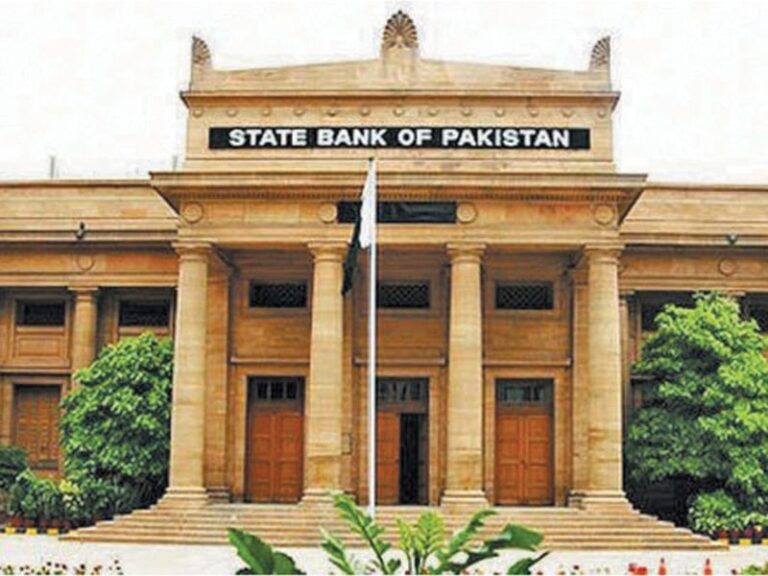KARACHI:
High-value transactions in Pakistan continue to rely significantly on paper-based and over-the-counter (OTC) methods, indicating issues of trust or accessibility in digital high-value channels.
While 89% of Pakistan’s retail payments are now conducted through digital channels, they represent just 29% of the total transaction value — Rs48 trillion out of Rs164 trillion — according to the State Bank of Pakistan (SBP)’s latest Payment Systems Quarterly Review.
In stark contrast, OTC payments processed through bank branches and branchless banking agents, though only 11% by volume, account for a dominant 71% share in value.
This disparity highlights a key challenge in the country’s digital transition: high-value transactions continue to rely heavily on cash and paper-based methods, suggesting ongoing trust, usability, or accessibility concerns in digital channels for large payments.
The SBP has released its Quarterly Payment Systems Review for Q3FY25, summarising trends in payment systems and presenting notable changes in the country’s digital payment landscape.
Digital payments in the country continued their upward trajectory during Q3FY25, with substantial increases in transaction volume and value. Retail payment volumes climbed 12% to reach 2,408 million transactions, while the overall transaction value grew by 8% to Rs164 trillion. Digital channels accounted for 89% of all retail transactions. Mobile app-based platforms — including mobile banking apps, branchless banking (BB) wallets, and e-money wallets — collectively processed 1,686 million transactions worth Rs27 trillion, reflecting a 16% growth in volume and a 22% surge in value.
The number of users of digital banking services also witnessed a steady rise. Mobile banking app users grew to 22.6 million (up by 7%), e-money and BB wallet users increased to 5.3 million (up by 12%) and 68.5 million (up by 6%) respectively, while internet banking users reached 14.1 million (up by 7%).
Internet banking, despite a growing user base of 14.1 million, showed only marginal growth in transaction value, suggesting limited use beyond basic fund transfers. Meanwhile, call centre and Interactive Voice Response (IVR)-based banking has become virtually obsolete, raising concerns about service accessibility for digitally marginalised populations.
Credit card usage remains limited, with only 4% of the 57.5 million cards in circulation being credit cards.
E-commerce payments increased by 40% in volume to 213 million and by 34% in value to Rs258 billion compared to the previous quarter. Digital wallets were the largest contributors to e-commerce payments — 94% (199.1 million) by volume — while card-based online payments accounted for only 6% (13.5 million). For in-store purchases, 140,861 merchants processed 99 million (up 12%) transactions worth Rs550 billion (up 8%) using a network of 179,383 point-of-sale terminals. Additionally, merchants accepting QR codes processed 21.7 million transactions valued at Rs61 billion.
SBP-operated payment systems, Raast (Instant Payment System) and RTGS (Real-time Gross Settlement System), have been instrumental in accelerating digital payments. Raast processed 371 million transactions worth Rs8.5 trillion during the quarter, bringing cumulative volumes since its launch to 1.5 billion transactions and more than Rs34 trillion in value. Large-value payments via RTGS handled 1.5 million transactions amounting to Rs347 trillion.
Although Raast has seen strong growth in person-to-person (P2P) transfers, with transactions rising to 368 million, its person-to-merchant (P2M) component remains underutilised. Only 1.5 million P2M transactions worth Rs4.5 billion were recorded, despite onboarding over 770,000 merchants. This points to weak adoption of QR and account-based payments at retail points.
The shift towards a digital economy is well-supported by SBP’s strategic initiatives, as well as the concerted efforts of banks, fintechs, and payment service providers, SBP stated. As digital payments expand, SBP remains committed to promoting financial inclusion and improving payment efficiency for all stakeholders.
Experts say the persistent dependence on cash, underdeveloped credit infrastructure, geographic disparities in digital access, and low interoperability across platforms are key hurdles to realising the full potential of digital financial inclusion in Pakistan.

